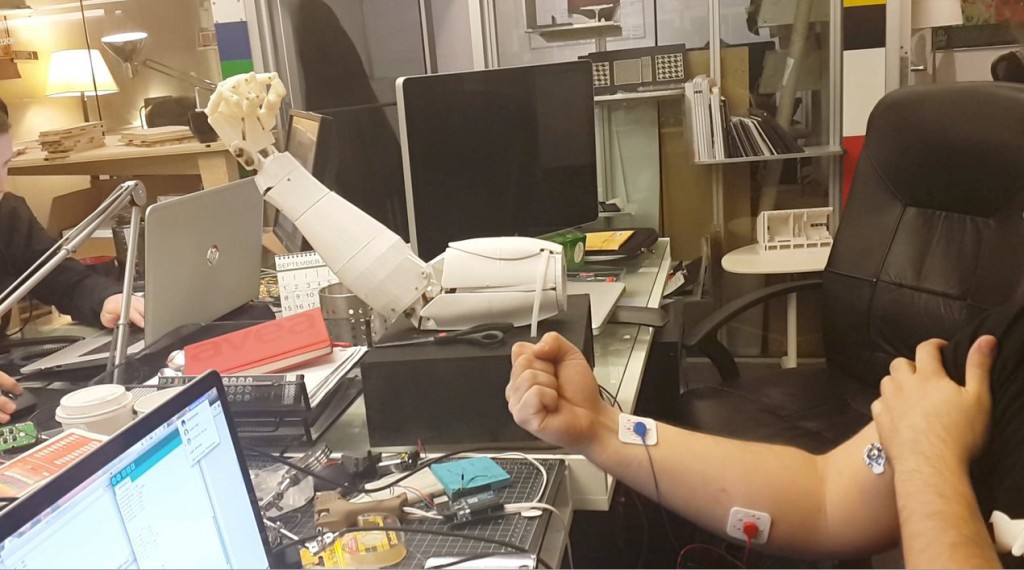A familiar plot point in sci-fi movies is the introduction of prosthetics as the artificial organic limbs give the main character a beyond-regular human being presence.

Image Source: LucasFilm Ltd.
This concept gets taken even further in Warren Ellis’ Transmetropolitan, which takes place about 2000 years into the future. Human kind has evolved in many ways and technology has grown close to our bodies.. The desire and means to augment experiences and capabilities are so elevated in Transmetropolitan that humans can be modified with alien DNA and they can also upload their consciousnesses into computers.
Inspired by this paradigm and by the development of bio technology, we can now see more and more technology incorporated into our daily lives i.e google glass, tattoo microphones and wearable tech. Through my research, I began to wonder: can we download our muscle memory? If we can, what has been done out in the world that could inform the process of doing so?
A bio-signal is a general term for all kinds of signals that can be (continually) measured and monitored from biological beings. The term bio-signal is often used to mean bio-electrical signal but in fact, bio-signal refers to both electrical and non-electrical signals. There are many different kinds of bio-signals, but the one that seems to be the most promising and has physiologists the most interested is electromyography.

EMG signals are detected over the skin surface and are generated by the electrical activity of the muscle fibers during contraction. Since each movement corresponds to a specific pattern of activation of several muscles, multi-channel EMG recordings, recorded by placing electrodes on the involved muscles, can be used to identify the movement. This concept has been applied in the development of myoelectric prostheses. A group at the University of Washington has been working with technology as the means to have a human computer interaction.
Now for the fabrication part of this class, after all it is called “scifi2scifab“. Recently an article caught my attention; “researchers at the University of Sheffield, Fripp’s company, have developed a process that can print a customized nose or ear within 48 hours. First, the patient’s face is 3D-scanned, then the specific contours are added to a digital model of the new prosthetic part for a perfect fit.” -3ders.org

Photograph: Fripp Design
As a prototype, I presented a 3d printed arm (thingiverse) that can be controlled by the EMG inputs generated by someone’s muscle. The majority of the arm components are 3d printed in a MakerBot Replicator, and then connected using 7 motors and strings that operate as tendons, influenced by the work of puppeteers. As you can see in the video (follow link) below, the arm tries to replicate the programmed basic gestures.
See it reacting here! | EMGarm.mov

